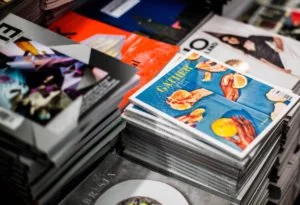There’s a lot more thought involved in creating a business card than you may have initially realized. Apart from drafting the design, content, and layout, there is one key thing you’ll also need to consider: the paper you’ll be using for your business card.
You may be surprised to know that there are many business card paper types, with each one giving a starkly different impression.
Why does the paper for calling cards matter?
Remember that your business cards are a direct representation of your brand and also of yourself. The printing paper you use for your business card affects the impression you want to give. It also helps tell your brand story.
In this digital age when Facebook and Google ads reign supreme, something tactile like a business card stands out and leaves a lasting impression. Whether it’s a good one or not rests entirely on how carefully you choose the details that go into your card.
While you may be tempted to call your printer and tell them to just print your business card onto whatever paper they have, or worse still, to print it on the cheapest paper to cut on costs, picking the best paper for your business card can help you appear professional and can even close a deal. Choosing a cheap business card paper will make you look just that – cheap.
Breaking it down: business card paper categories
Weight
Weight doesn’t refer here to how many grams and ounces the business card paper weighs. Rather, in the digital printing world, when we talk about weight, this refers to the paper’s thickness and stiffness.
Paper’s weight is measured in hundredths of an inch. When talking about business card paper weight, this is expressed in points, with each point being equivalent to one-thousandth or .001 inches. If a paper is said to be 10pt, it is 0.1 inches thick. 20pt is 0.2 inches thick. 30pt is 0.3 inches thick, and so on. Higher numbers indicate thicker and stiffer paper.
If you’re having trouble deciding on which weight to go with, common weights for business cards are either 14pt or 16pt stock. If you want to go with something a little thicker, we recommend either an 18pt or even a 32pt stock.
Some businesses opt to have their business cards printed on lighter card stock, sometimes going as light as 11 to 14 points. These lightweight cards are seldom handed out and are used primarily for display such as on a desk or stapled onto other marketing collaterals like brochures. Because people rarely physically hand them out personally and take the time to make introductions to the recipients, making a good impression through the cards is not the goal. Rather, it’s to provide the recipient with the pertinent information such as the name and contact details. So, splurging on a more expensive type of paper stock is not important in this scenario.
On the flip side, you’ll want a thicker business card, those 30pt and up, if you want a card that can withstand the wear and tear of daily use. These cards make great first impressions and give an air of professionalism, no matter your career or job title. The paper stock feels better, looks better, and lasts much longer than the thinner weights.
Keep in mind that as the paper gets thicker, the more expensive it will be.
Finish
Thickness is not the only thing you will need to decide on when choosing your paper for printing. You will also need to decide on its finish. This will help tie the look altogether and should complement your branding.
The three most common finishes are dull, matte, and glossy. From there, you can choose to have them coated or uncoated.
Uncoated: Uncoated paper is a non-reflective type of paper, similar to your average A4 paper. Because it does not have another layer on top of it, it has a lot more texture than glossy and matte prints, but it also makes it more prone to damage. When printing on an uncoated sheet of paper, you will notice that the colors will come out more subdued but still clear. If you’re looking to write on your business cards or are on a tight budget, then this is the finish for you.
Coated: Coated paper, on the other hand,have a surface sealant on top of it, usually made of clay, that help give it certain qualities such as shine, weight, or ink absorbency. This is typically the type associated with brochure paper. Coated paper can have different types including matte, satin, or glossy.
Printing on coated paper tends to produce the most accurate colors, especially when it comes to photos and minute details.
- Matte: Matte paper, sometimes called dull, is smoother and more elegant than the humble uncoated card stock but it is not shiny like the gloss paper.
- Satin: Satin paper come in between matte and gloss. They contain a fair bit of shine to them but have a lower shine level than gloss paper.
- Gloss: Gloss paper is the shiniest of them all. On top of being glossy, the shine also offers a layer of protection against water and tearing. It also helps make your colors pop, the photographs to stand out, and the letters to stay crisp and sharp. Gloss is best for when you want to pull all the stops and budget is not a concern of yours. It’s also good for any designs with bright colors or for business cards that need double-sided printing. A downside to gloss paper, though, is that it is virtually impossible to write on it with a pen as any ink tends to smudge or smear on it.
To Sum It Up
Your business card may be the first thing your potential client will see about you, so everything about contributes to the impression you make. The wrong choice in paper can spell the difference between a client earned or lost. The weight, finish, and quality of paper you choose will be a reflection of your business and even yourself. While you may end up saving money on the type of paper you go for, you may also be sacrificing some important clients along the way.
Remember that the thicker the paper, the more premium of a feel it will give you. This will also add to the cost, so try to find a happy medium. The type of finish you end up choosing will depend on your design and branding, but keep in mind that this will affect the look and feel of your business card.



